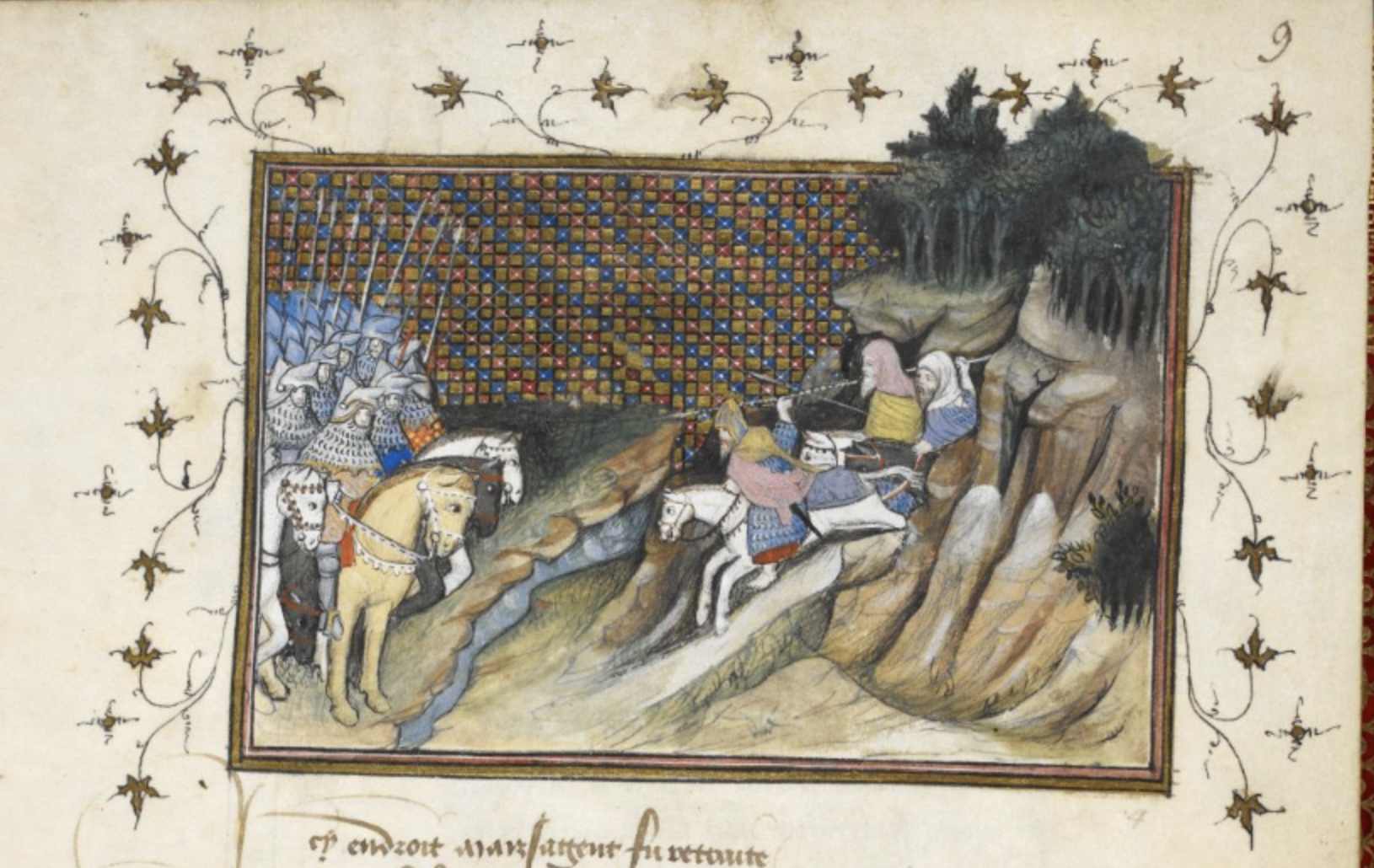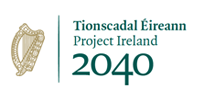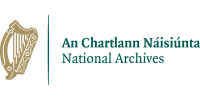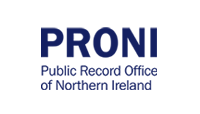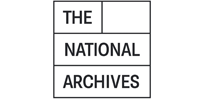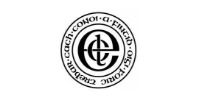
 Curated Collection
Curated CollectionIrish Kings and English Rulers
Late-medieval Ireland was a contested space.About this Collection
Late-medieval Ireland was a contested space. Irish kings, their people and the settler English communities across the island clashed. Colonial power and Irish authority were in a constant state of tension, but they also mingled in a world of intermarriage and shared legal rights and customs. Faced with entangled community relations, English rulers needed diplomacy alongside military might. They could insist on the subject status of Irish kings but often did not have the authority to make it a reality. Diplomatic agreements reveal something of the influence, political aspirations and voices of the colonised. Many have survived in a variety of forms; these are now being translated into English and made available alongside digitised images on the Virtual Record Treasury.
The greatest archival windfall of such agreements between English royal power and Gaelic Irish leaders comes from the expedition of King Richard II to Ireland in 1394/5 when eighty Irish kings submitted to him. These included most of the most influential community leaders across Gaelic Ireland, notably Brian Ó Briain of Thomond, Niall Óg Ó Néill and his father Niall Mór of Ulster, Toirdelbach Ó Conchobhair Donn of Connacht and Art Mac Murchadha Caomhánach of Leinster.
These fascinating records survive as original instruments legally witnessed by a notary public and as copies of these instruments made for Richard’s treasury, together with related correspondence. They provide us with richly detailed insights into the diplomatic process. They show, for example, the variety of settings across Ireland in which diplomatic meetings took place and whether Richard was personally involved. The negotiating voices on both sides are clear from the oaths taken in Irish and translated by interpreters for the king. They also show the influence of the Church, the language of submission and what the king of England would accept as a sufficient statement of subservience and loyalty. Finally, they record the rituals involved in late medieval diplomacy, such as the knighting by Richard of some leaders who submitted in person, acknowledging their status within western European chivalric culture.
As we move into the fifteenth century, there are major clusters of surviving agreements, usually from moments of political significance or crisis within the English colony in Ireland. These borrow from and build upon Richard’s diplomacy. For example, in 1402, Henry IV’s son Thomas of Lancaster was lord lieutenant of Ireland and negotiated with Donnchadh Ó Broin and others. In the mid-1440s, at the height of the feud between the leading dynasties of English Ireland, the Talbots and the Butler earls of Ormond, John Talbot made agreements in his role as lieutenant with significant Irish kings. In 1449, Richard, duke of York, who would later be a claimant for the English throne, gathered together many of the English of Ireland alongside the Irish kings in a series of indentures.
Collection Name: Irish Kings and English Rulers
- British Library (London)
- BL Cotton MS Titus B XI Part 1 - Collection of original documents, letters and indentures relating to Ireland temp. Edward I to Mary
- BL Cotton MS Titus B XI part 1/28 - Indenture between Richard, duke of York and Énrí O'Neill (Ó Néill) [Henricus filius Eugenii Oneel]
- BL Cotton MS Titus B XI part 1/38 - Bill naming the English and Irish submitting to Richard, duke of York
- BL Cotton MS Titus B XI part 1/40 - List of English and Irish submitting to Richard, duke of York
- Lambeth Palace Library (London)
- LPL Carew MS 603 - Submissions of Irish kings to English monarchs
- See More
- LPL Carew MS 603/87 - LPL Carew MS 603/87
- See More
- LPL Carew MS 603/132 - LPL Carew MS 603/132
- See More
- LPL Carew MS 603/132/1 - Indenture between Donnchadh O'Byrne (Ó Broin) [Donald Obrynne] and Thomas of Lancaster, lieutenant of Ireland, f. 87v
- LPL Carew MS 603/132/2 - Indenture between Niall Óg O'Neill (Ó Néill) [Neale Oneale son of Oneale] and John Stanley, lieutenant of Ireland, f. 132r
- LPL Carew MS 603/132/3 - Indenture between Eochaidh MacMahon (Mac Mathghama) [Aghi McMaghon] and Thomas of Lancaster, lieutenant of Ireland, f. 132r
- LPL Carew MS 603/136 - LPL Carew MS 603/136
- See More
- LPL Carew MS 603/138 - LPL Carew MS 603/138
- See More
- LPL Carew MS 603/139 - LPL Carew MS 603/139
- See More
- LPL Carew MS 603/139/1 - Submission of Dáithí Mór MacManus (Mac Manus)[David Murgh Macmanus] and others to Richard II, f. 139r
- LPL Carew MS 603/139/2 - Submission of Laighneach O'Connor (Ó Conchobhair) [Leynagh Fersson O Conour] to Richard II, 139r
- LPL Carew MS 603/139/3 - Submission of Donnchadh O'Byrne (Ó Broin) [Donatus O Bryn] to Richard II, f. 139r
- LPL Carew MS 603/143 - LPL Carew MS 603/143
- See More
- LPL Carew MS 603/143/1 - Submission of John MacDonald [Seán Tanister Mac Domhnaill] (Schane Mactonlyd) to Richard II, f. 143r
- LPL Carew MS 603/143/2 - Submission of Cú-Uladh O'Hanlon (Ó hAnluain) [Catholicus son of Avyrcagh O Hanlon] to Richard II, f. 143v
- LPL Carew MS 603/143/3 - Submission of Donnchadh O'Byrne (Ó Broin) [Donatus O Bryn] to Richard II, f. 143v
- LPL Carew MS 603/143/4 - Submission of Art O'Dempsey (Ó Díomusaigh) [Arthurus de Demesey] to Richard II, f. 143v
- LPL Carew MS 603/143/5 - Submission of Art Mór MacMurrough Kavanagh (Mac Murchadha Caomhánach) [Arthur Makmurgh] to Richard II, f. 143v
- LPL Carew MS 603/143/6 - Submission of Tadhg O'Meaghar (Ó Meachair) [Taheus O Mare] to Richard II, f. 143v
- LPL Carew MS 603/143/7 - Submission of Tadhg na Mainistreach MacCarthy Mór (Mac Carthaigh Mór [Tatheus Makarthy] to Richard II, f. 143v
- LPL Carew MS 603/143/8 - Submission of Niall Óg O'Neill (Ó Néill) [Nellanus son of O Nel] to Richard II, f. 143v
- LPL Carew MS 603/144 - LPL Carew MS 603/144
- See More
- LPL Carew MS 603/144/1 - Submission of Muircheartach Óg Magennis (Mac Aonghusa) [Mauricius Macgenuys] to Richard II, f. 144v
- LPL Carew MS 603/144/2 - Submission of Niall O'Hanlon (Ó hAnluain) [Neel O Hanloyn] to Richard II, f. 144v
- LPL Carew MS 603/144/3 - Submission of Adam St Aubin [Ricardi syn Tobyn] to Richard II, f. 144v
- LPL Carew MS 603/144/4 - Submission of Maurice FitzMaurice [Moris fitz Moris] to Richard II
- LPL Carew MS 603/144/5 - Submission of William Baret to Richard II
- LPL Carew MS 603/144/6 - Submission of Brian O'Brien (Ó Briain) [Bernardus O Brien] to Richard II
- LPL Carew MS 603/144/7 - Submission of Gearoíd O'Byrne (Ó Broin) [Gerald Obrien] and others to Richard II
- LPL Carew MS 603/144/8 - Submission of Laighneach O'Connor (Ó Conchobhair) [Leynagh Fersson O Conour] to Richard II
- LPL Carew MS 603/144/9 - Submission of Donnchadh O'Byrne (Ó Broin) [Donatus O Bryn] to Richard II
- LPL Carew MS 603/144/10 - Letters of Niall Óg O'Neill (Ó Néill) [Nellanus son of O Nel] and others to Richard II
- LPL Carew MS 603/145 - LPL Carew MS 603/145
- See More
- LPL Carew MS 603/145/1 - Submission of Toirdelbach O'Connor Don (Ó Conchobhair Donn) [Terrelagh O Concor Don] to Richard II
- LPL Carew MS 603/145/2 - Submission of Brian O'Brien (Ó Briain) [Bernardus O Brien] to Richard II
- LPL Carew MS 603/145/3 - Submission of Tadhg O'Carroll (Ó Cearbhail) [Tatheus O Kerwll] to Richard II
- LPL Carew MS 603/145/4 - Submission of Art Mór MacMurrough Kavanagh (Mac Murchadha Caomhánach) [Arthur MacMurgh] to Richard II
- LPL Carew MS 603/145/5 - Submission of Toirdelbach O'Connor Don (Ó Conchobhair Donn) [Terrelagh O Concor Don] to Richard II
- LPL Carew MS 603/145/6 - Submission of Malachy O'More (Ó Mordha) [Malachias O Morthe] and others to Richard II
- LPL Carew MS 603/145/7 - Submission of Murchadh Bán O'Farrell (Ó Fearghaill) [Mogh bane O Ferel] and others to Richard II
- LPL Carew MS 603/145/8 - Submission of Seán MacMahon (Mac Mathghamhna) [Schan MacMahona] to Richard II translated by Edmund Curtis
- LPL Carew MS 603/145/9 - Submission of Diarmuid O'Connor Faly (Ó Conchobhair Failge) [Dormicius O Conhor de Faly] to Richard II
- LPL Carew MS 603/145/10 - Submission of Tómas Carrach Kavanagh (Caomhánach) [Karragh Kevenagh] to Richard II
- LPL Carew MS 603/145/11 - Submission of Donnchadh O'Nolan (Ó Nualláin) [Donaldus O Nolon] to Richard II
- LPL Carew MS 603/145/12 - Submission of Niall Mór O'Neill (Ó Néill) [Nellanus O Nel senior] to Richard II
- LPL Carew MS 603/146 - LPL Carew MS 603/146
- See More
- LPL Carew MS 608 - Copies of the Submissions of the Irish Kings on the Memoranda Roll of the English Exchequer, 18 Richard II
- National Library of Ireland
- The National Archives (UK)
- TNA C 47 - English Chancery Miscellanea
- See More
- TNA C 47/10/25 - TNA C 47/10/25
- See More
- TNA C 47/10/25/1 - Submission of Niall Mór O'Neill (Ó Néill) [Nellanus Onel senior] to Richard II
- TNA C 47/10/25/2 - Submission of Art Mór MacMurrough Kavanagh (Mac Murchadha Caomhánach) [Arthur MacMurgh] to Richard II
- TNA C 47/10/25/3 - Submission of Donnchadh MacMurrough (Mac Murchadha) [Donaldus Morgh his son] to Richard II
- TNA C 47/10/25/4 - Submission of Niall O'Hanlon (Ó hAnluain) [Neel O Hanloyn] to Richard II
- TNA C 47/10/25/5 - Submission of Murchadh Bán O'Farrell (Ó Fearghaill) [Mogh bane O Ferel] and others to Richard II
- TNA C 47/10/25/6 - Submission of Tadhg O'Meaghar (Ó Meachair) [Taheus O Mare] to Richard II
- TNA C 47/10/25/7 - Submission of Gearoíd O'Byrne (Ó Broin) [Gerald Fitzmaurice Obryen] and others to Richard II
- TNA C 47/10/25/8 - Submission of Toirdelbach O'Brien (Ó Briain) [Terrelagh fitz Mauricii O Brien] to Richard II
- TNA C 47/10/25/9 - Submission of Diarmuid O'Connor Faly (Ó Conchobhair Failge) [Dormicius O Conhor de Faly] to Richard II
- TNA C 47/10/25/10 - Letter from Malachy O'Kelly (Ó Ceallaigh) [Malachias Okeally] to Richard II
- TNA C 47/10/25/11 - Submission of Toirdelbach O'Connor Don (Ó Conchobhair Donn) [Terrelagh O Concor Don] to Richard II
- TNA C 47/10/25/12 - Submission of Tadhg MacCarthy (Mac Carthaigh) [Taik MacKarthy Maior] to Richard II
- TNA C 47/10/25/13 - Letters of Niall Óg O'Neill (Ó Néill) [Nellanus son of O Nel] and others to Richard II
- TNA E 30 - English Exchequer: Diplomatic Documents relating to Ireland
- See More
- TNA E 30/1542 - Indenture between Seán O'Reilly (Ó Raighilligh) [John Oraylie], Brian MacMahon (Mac Mathghamha) [Bernard McMahon] and Gerald, earl of Kildare
- TNA E 30/1558 - Indenture between Brian MacMahon (Mac Mathghama) [Bernard Mcmahon] and others and James Butler, earl of Ormond
- TNA E 30/1559 - Indenture between Padraig O'More (Ó Mordha) [O Moore] and John Talbot, earl of Shrewsbury
- TNA E 30/1560 - Indenture between Eoghan O'Reilly (Ó Raighilligh) [Eugene ORayly] and John Talbot, earl of Shrewsbury
- TNA E 30/1561 - Indenture between Tomás McCall O'Ferrell (Ó Fearghail) [McCall Oferrall] and John Talbot, earl of Shrewsbury
- TNA E 30/1562 - Indenture between Gerald, earl of Kildare and Henry VII
- TNA E 30/1563 - Indenture between Maurice, earl of Desmond and Henry VII
- TNA E 30/1564 - Oath of the citizens of Cork and Kinsale to Henry VII
- TNA E 30/1565 - Oath of the citizens of Youghal to Henry VII
- TNA E 30/1566 - Indenture between Art O'Nolan (Ó Nualláin) [Arthur Onolan] and John Talbot, earl of Shrewsbury
- TNA E 30/1567 - Indenture between Eoghan O'Neill (Ó Néill) [Eugene Oneyle] and John Talbot, earl of Shrewsbury
- TNA E 30/1568 - Indenture between Feidhlim O'Reilly (Ó Raighilligh) [Phelim O'Rayly] and John Talbot, earl of Shrewsbury
- TNA E 30/1569 - Indenture between Calvagh O'Connor (Ó Conchobhair) [Calvarius Oconchur] and John Talbot, earl of Shrewsbury
- TNA E 30/1570 - Indenture between Donnchadh MacMurrough (Mac Murchadha) [Donatus McMurghe] and John Talbot, earl of Shrewsbury
- TNA E 30/1571 - Indenture between Toirdelbach O'Toole (Ó Tuathail) [Tollagh Otothyll] and John Talbot, earl of Shrewsbury
- TNA E 30/1572 - Indenture between Donnchadh O'Byrne (Ó Broin) [Donatus Obryn] and James Butler, earl of Ormond
- TNA E 30/1573 - Indenture between Eoghan O'Neill (Ó Néill) [Eugene Oneill] and James Butler, earl of Ormond
- TNA E 30/1743 - Indenture between Cahir O'Dempsey (Ó Díomusaigh) [Karolus O'Dymsy] and John Talbot, earl of Shrewsbury
- TNA E 159 - English Exchequer: Memoranda Rolls
- See More
- TNA E 159/171 - English Exchequer: Memoranda Roll for 18 Richard II [1394-5]
- See More
- TNA E 159/171/Recorda/T - Submissions of the Irish Kings on the Memoranda Roll of the English Exchequer, 18 Richard II
- See More
- TNA E 159/171/Recorda/T/19 - TNA E 159/171/Recorda/T/19
- See More
- TNA E 159/171/Recorda/T/19/1 - Submission of John MacDonald [Seán Tanister Mac Domhnaill] (Schane Mactonlyd) to Richard II, rot. 19 face
- TNA E 159/171/Recorda/T/19/2 - Submission of Cú-Uladh O'Hanlon (Ó hAnluain) [Catholicus son of Avyrcagh O Hanlon] to Richard II, rot. 19 face
- TNA E 159/171/Recorda/T/19/3 - Submission of Donnchadh O'Byrne (Ó Broin) [Donatus O Bryn] to Richard II, rot. 19 dorse
- TNA E 159/171/Recorda/T/19/4 - Submission of Art O'Dempsey (Ó Díomusaigh) [Arthurus de Demesey] to Richard II, rot. 19 dorse
- TNA E 159/171/Recorda/T/20 - TNA E 159/171/Recorda/T/20
- See More
- TNA E 159/171/Recorda/T/20/5 - Submission of Art Mór MacMurrough Kavanagh (Mac Murchadha Caomhánach) [Arthur Makmurgh] to Richard II, rot. 20 face
- TNA E 159/171/Recorda/T/20/6 - Submission of Tadhg O'Meaghar (Ó Meachair) [Taheus O Mare] to Richard II, rot. 20 face
- TNA E 159/171/Recorda/T/20/7 - Letter of Tadhg na Mainistreach MacCarthy Mór (Mac Carthaigh Mór [Tatheus Makarthy] to Richard II, rot. 20 dorse
- TNA E 159/171/Recorda/T/20/8 - Submission of Niall Óg O'Neill (Ó Néill) [Nellanus son of O Nel] to Richard II, rot. 20 dorse
- TNA E 159/171/Recorda/T/20/9 - Submission of Muircheartach Óg Magennis (Mac Aonghusa) [Mauricius Macgenuys] to Richard II, rot. 20 dorse
- TNA E 159/171/Recorda/T/21 - TNA E 159/171/Recorda/T/21
- See More
- TNA E 159/171/Recorda/T/21/10 - Submission of Niall O'Hanlon (Ó hAnluain) [Neel O Hanloyn] to Richard II, rot. 21 face
- TNA E 159/171/Recorda/T/21/11 - Submission of Adam St Aubin [Ricardi syn Tobyn] to Richard II, rot. 21 dorse
- TNA E 159/171/Recorda/T/21/12 - Submission of Maurice FitzMaurice [Moris fitz Moris] to Richard II, rot. 21 dorse
- TNA E 159/171/Recorda/T/21/13 - Submission of William Baret to Richard II, rot. 21 dorse
- TNA E 159/171/Recorda/T/22 - TNA E 159/171/Recorda/T/22
- See More
- TNA E 159/171/Recorda/T/23 - TNA E 159/171/Recorda/T/23
- See More
- TNA E 159/171/Recorda/T/24 - TNA E 159/171/Recorda/T/24
- See More
- TNA E 159/171/Recorda/T/25 - TNA E 159/171/Recorda/T/25
- See More
- TNA E 159/171/Recorda/T/25/18 - Submission of Brian O'Brien (Ó Briain) [Bernardus O Brien] to Richard II, rot. 25 face
- TNA E 159/171/Recorda/T/25/19 - Submission of Tadhg O'Carroll (Ó Cearbhail) [Tatheus O Kerwll] to Richard II, rot. 25 face
- TNA E 159/171/Recorda/T/25/20 - Submission of Tadhg O'Carroll (Ó Cearbhail) [Tatheus O Kerwll] to Richard II, rot. 25 dorse
- TNA E 159/171/Recorda/T/25/21 - Submission of Cú-Uladh Magennis (Mac Aonghusa) [Cologh MacGunys] and others to Richard II, rot. 25 dorse
- TNA E 159/171/Recorda/T/26 - TNA E 159/171/Recorda/T/26
- See More
- TNA E 159/171/Recorda/T/26/22 - Submission of Art Mór MacMurrough Kavanagh (Mac Murchadha Caomhánach) [Arthur MacMurgh] to Richard II, rot. 26 face
- TNA E 159/171/Recorda/T/26/23 - Submission of Toirdelbach O'Connor Don (Ó Conchobhair Donn) [Terrelagh O Concor Don] to Richard II, rot. 26 dorse
- TNA E 159/171/Recorda/T/26/24 - Submission of Malachy O'More (Ó Mordha) [Malachias O Morthe] and others to Richard II, rot. 26 dorse
- TNA E 159/171/Recorda/T/27 - TNA E 159/171/Recorda/T/27
- See More
- TNA E 159/171/Recorda/T/27/25 - Submission of Murchadh Bán O'Farrell (Ó Fearghaill) [Mogh bane O Ferel] and others to Richard II, rot 27 face
- TNA E 159/171/Recorda/T/27/26 - Submission of Seán MacMahon (Mac Mathghamhna) [Schan MacMahona] to Richard II, rot. 27 face
- TNA E 159/171/Recorda/T/27/27 - Submission of Diarmuid O'Connor Faly (Ó Conchobhair Failge) [Dormicius O Conhor de Faly] to Richard II, rot. 27 face
- TNA E 159/171/Recorda/T/27/28 - Submission of Tómas Carrach Kavanagh (Caomhánach) [Karragh Kevenagh] to Richard II, rot. 27 dorse
- TNA E 159/171/Recorda/T/27/29 - Submission of Donnchadh O'Nolan (Ó Nualláin) [Donaldus O Nolon] to Richard II, rot. 27 dorse
- TNA E 159/171/Recorda/T/27/30 - Submission of Niall Mór O'Neill (Ó Néill) [Nellanus O Nel senior] to Richard II, rot. 27 dorse
- TNA E 159/171/Recorda/T/28 - TNA E 159/171/Recorda/T/28
- See More
- TNA E 159/171/Recorda/T/28/31 - Submission of Tadhg MacCarthy (Mac Carthaigh) [Taik MacKarthy Maior] to Richard II, rot. 28 face
- TNA E 159/171/Recorda/T/28/32 - Submission of Murchadh O'Connor Faly (Ó Conchobhair Failge) [Murgh O Conghir de Faly] to Richard II, rot. 28 dorse
- TNA E 159/171/Recorda/T/28/33 - Letter from Malachy O'Kelly (Ó Ceallaigh) [Malachias Okeally] to Richard II, rot. 28 dorse
- TNA E 159/171/Recorda/T/29 - TNA E 159/171/Recorda/T/29
- See More
- TNA E 159/171/Recorda/T/29/34 - Submission of Toirdelbach O'Brien (Ó Briain) [Terrelagh fitz Mauricii O Brien] to Richard II, rot. 29 face
- TNA E 159/171/Recorda/T/29/35 - Submission of Toirdelbach O'Connor Donn (Ó Conchobhair Donn) [Teotricus O Choncowyr] to Richard II, rot. 29 face
- TNA E 159/171/Recorda/T/29/36 - Submission of Cormac MacCarthy (Mac Carthaigh) [Cormacus filius Dormicii MacCarthi] to Richard II, rot. 29 dorse
- TNA E 159/171/Recorda/T/29/37 - Submission of Donnchadh MacMurrough (Mac Murchadha) [Donaldus Morgh his son] to Richard II, rot. 29 dorse
- TNA E 159/171/Recorda/T/29/38 - Submission of Magawley (Mac Amhalghaidh) [Magavle] and others to Richard II, rot. 29 dorse
- TNA E 159/171/Recorda/T/30 - TNA E 159/171/Recorda/T/30
- See More
- Virtual Record Treasury of Ireland
- VRTI MedEx 3 - Documents relating to Irish kings and lords: indentures, submissions, instruments and letters
- See More
- VRTI MedEx 3/1370 - VRTI MedEx 3/1370
- See More
- VRTI MedEx 3/1380 - VRTI MedEx 3/1380
- See More
- VRTI MedEx 3/1395 - VRTI MedEx 3/1395
- See More
- VRTI MedEx 3/1395/1 - Submission of Niall Mór O'Neill (Ó Néill) [Nellanus O Nel senior] to Richard II, translated by Edmund Curtis
- VRTI MedEx 3/1395/2 - Submission of Niall Mór O'Neill (Ó Néill) [Nellanus Onel senior] to Richard II translated by the Medieval Exchequer Gold Seam team
- VRTI MedEx 3/1395/3 - Submission of Donnchadh MacMurrough (Mac Murchadha) [Donaldus Morgh his son] to Richard II
- See More
- VRTI MedEx 3/1395/3/1 - Submission of Donnchadh MacMurrough (Mac Murchadha) [Donaldus Morgh his son] to Richard II translated by Edmund Curtis
- VRTI MedEx 3/1395/3/2 - Submission of Donnchadh MacMurrough (Mac Murchadha) [Donaldus Morgh his son] to Richard II translated by the Medieval Exchequer Gold Seam team
- VRTI MedEx 3/1395/4 - Submission of Brian O'Brien (Ó Briain) [Bernardus O Brien] to Richard II translated by Edmund Curtis
- VRTI MedEx 3/1395/5 - Submission of Gearoíd O'Byrne (Ó Broin) [Gerald Obrien] and others to Richard II
- See More
- VRTI MedEx 3/1395/6 - Submission of Dáithí Mór MacManus (Mac Manus)[David Murgh Macmanus] and others to Richard II translated by Edmund Curtis
- VRTI MedEx 3/1395/7 - Submission of Donnchadh O'Bryne (Ó Broin) [Donatus O Bryn] to Richard II translated by Edmund Curtis
- VRTI MedEx 3/1395/8 - Submission of Laighneach O'Connor (Ó Conchobhair) [Leynagh Fersson O Conour] and others to Richard II translated by Edmund Curtis
- VRTI MedEx 3/1395/9 - Submission of Donnchadh O'Bryne (Ó Broin) [Donatus O Bryn] to Richard II translated by Edmund Curtis
- VRTI MedEx 3/1395/10 - Submission of Brian O'Brien (Ó Briain) [Bernardus O Brien]to Richard II translated by Edmund Curtis
- VRTI MedEx 3/1395/11 - Letters of Niall Óg O'Neill (Ó Néill) [Nellanus son of O Nel] and others to Richard II
- See More
- VRTI MedEx 3/1395/11/1 - Letters of Niall Óg O'Neill (Ó Néill) [Nellanus son of O Nel] and others to Richard II translated by Edmund Curtis
- VRTI MedEx 3/1395/11/2 - Letters of Niall Óg O'Neill (Ó Néill) [Nellanus son of O Nel] and others to Richard II translated by the Medieval Exchequer Gold Seam team
- VRTI MedEx 3/1395/12 - Letter of Tadhg na Mainistreach MacCarthy Mór (Mac Carthaigh Mór [Tatheus Makarthy] to Richard II translated by Edmund Curtis
- VRTI MedEx 3/1395/13 - Submission of Seán MacMahon (Mac Mathghamhna) [Schan MacMahona] to Richard II translated by Edmund Curtis
- VRTI MedEx 3/1395/14 - Submission of Murchadh Bán O'Farrell (Ó Fearghaill) [Mogh bane O Ferel] and others to Richard II
- See More
- VRTI MedEx 3/1395/14/1 - Submission of Murchadh Bán O'Farrell (Ó Fearghaill) [Mogh bane O Ferel] and others to Richard II translated by Edmund Curtis
- VRTI MedEx 3/1395/14/2 - Submission of Murchadh Bán O'Farrell (Ó Fearghaill) [Mogh bane O Ferel] and others to Richard II translated by the Medieval Exchequer Gold Seam team
- VRTI MedEx 3/1395/15 - Submission of Magawley (Mac Amhalghaidh) [Magavle] and others to Richard II translated by Edmund Curtis
- VRTI MedEx 3/1395/16 - Submission of Conor O'Melaghlin (Ó Maelsechlainn) [Conhor Amolaghlyn] and others to Richard II translated by Edmund Curtis
- VRTI MedEx 3/1395/17 - Submission of John MacDonald [Seán Tanister Mac Domhnaill] (Schane Mactonlyd) to Richard II translated by Edmund Curtis
- VRTI MedEx 3/1395/18 - Submission of Cú-Uladh O'Hanlon (Ó hAnluain) [Catholicus son of Avyrcagh O Hanlon] to Richard II translated by Edmund Curtis
- VRTI MedEx 3/1395/19 - Submission of Niall Óg O'Neill (Ó Néill) [Nellanus son of O Nel] to Richard II translated by Edmund Curtis
- VRTI MedEx 3/1395/20 - Submission of Muircheartach Óg Magennis (Mac Aonghusa) [Mauricius Macgenuys] to Richard II translated by Edmund Curtis
- VRTI MedEx 3/1395/21 - Submission of Niall O'Hanlon (Ó hAnluain) [Neel O Hanloyn] to Richard II
- See More
- VRTI MedEx 3/1395/22 - Submission of Cú-Uladh Magennis (Mac Aonghusa) [Cologh MacGunys] and others to Richard II translated by Edmund Curtis
- VRTI MedEx 3/1395/23 - Letter from Malachy O'Kelly (Ó Ceallaigh) [Malachias Okeally] to Richard II
- See More
- VRTI MedEx 3/1395/24 - Submission of Brian O'Brien (Ó Briain) [Brian Obrien] to Richard II
- VRTI MedEx 3/1395/25 - Submission of Murchadh O'Connor Faly (Ó Conchobhair Failge) [Murgh O Conghir de Faly] to Richard II translated by Edmund Curtis
- VRTI MedEx 3/1395/26 - Submission of Malachy O'More (Ó Mordha) [Malachias O Morthe] and others to Richard II translated by Edmund Curtis
- VRTI MedEx 3/1395/27 - Submission of Tomás Carrach Kavanagh (Caomhánach) [Karragh Kevenagh] to Richard II translated by Edmund Curtis
- VRTI MedEx 3/1395/28 - Submission of Art Mór MacMurrough Kavanagh (Mac Murchadha Caomhánach) [Arthur Makmurgh] to Richard II translated by Edmund Curtis
- VRTI MedEx 3/1395/29 - Submission of Adam St Aubin [Ricardi syn Tobyn] to Richard II translated by Edmund Curtis
- VRTI MedEx 3/1395/30 - Submission of Maurice FitzMaurice [Moris fitz Moris] to Richard II translated by Edmund Curtis
- VRTI MedEx 3/1395/31 - Submission of William Baret to Richard II translated by Edmund Curtis
- VRTI MedEx 3/1395/32 - Submission of Tadhg MacCarthy (Mac Carthaigh) [Taik MacKarthy Maior] to Richard II
- See More
- VRTI MedEx 3/1395/33 - Submission of Cormac MacCarthy (Mac Carthaigh) [Cormacus filius Dormicii MacCarthi] to Richard II translated by Edmund Curtis
- VRTI MedEx 3/1395/34 - Submission of Art Mór MacMurrough Kavanagh (Mac Murchadha Caomhánach) [Arthur MacMurgh] to Richard II
- See More
- VRTI MedEx 3/1395/34/1 - Submission of Art Mór MacMurrough Kavanagh (Mac Murchadha Caomhánach) [Arthur MacMurgh] to Richard II translated by Edmund Curtis
- VRTI MedEx 3/1395/34/2 - Submission of Art Mór MacMurrough Kavanagh (Mac Murchadha Caomhánach) [Arthur MacMurgh] to Richard II translated by the Medieval Exchequer Gold Seam team
- VRTI MedEx 3/1395/35 - Submission of Tadhg O'Meaghar (Ó Meachair) [Taheus O Mare] to Richard II
- See More
- VRTI MedEx 3/1395/36 - Submission of Diarmuid O'Connor Faly (Ó Conchobhair Failge) [Dormicius O Conhor de Faly] to Richard II
- See More
- VRTI MedEx 3/1395/36/1 - Submission of Diarmuid O'Connor Faly (Ó Conchobhair Failge) [Dormicius O Conhor de Faly] to Richard II translated by Edmund Curtis
- VRTI MedEx 3/1395/36/2 - Submission of Diarmuid O'Connor Faly (Ó Conchobhair Failge) [Dormicius O Conhor de Faly] to Richard II translated by the Medieval Exchequer Gold Seam team
- VRTI MedEx 3/1395/37 - Submission of Tadhg O'Carroll (Ó Cearbhail) [Tatheus O Kerwll] to Richard II translated by Edmund Curtis
- VRTI MedEx 3/1395/38 - Submission of Art O'Dempsey (Ó Díomusaigh) [Arthurus de Demesey] to Richard II translated by Edmund Curtis
- VRTI MedEx 3/1395/39 - Submission of Tadhg O'Carroll (Ó Cearbhail) [Tatheus O Kerwll] to Richard II translated by Edmund Curtis
- VRTI MedEx 3/1395/40 - Submission of Toirdelbach O'Connor Donn (Ó Conchobhair Donn) [Teotricus O Choncowyr] to Richard II translated by Edmund Curtis
- VRTI MedEx 3/1395/41 - Submission of Toirdelbach O'Brien (Ó Briain) [Terrelagh fitz Mauricii O Brien] to Richard II
- See More
- VRTI MedEx 3/1395/41/1 - Submission of Toirdelbach O'Brien (Ó Briain) [Terrelagh fitz Mauricii O Brien] to Richard II translated by Edmund Curtis
- VRTI MedEx 3/1395/41/2 - Submission of Toirdelbach O'Brien (Ó Briain) [Terrelagh fitz Mauricii O Brien] to Richard II translated by the Medieval Exchequer Gold Seam Team
- VRTI MedEx 3/1395/42 - Submission of Toirdelbach O'Connor Don (Ó Conchobhair Donn) [Terrelagh O Concor Don] to Richard II
- See More
- VRTI MedEx 3/1395/42/1 - Submission of Toirdelbach O'Connor Don (Ó Conchobhair Donn) [Terrelagh O Concor Don] to Richard II translated by Edmund Curtis
- VRTI MedEx 3/1395/42/2 - Submission of Toirdelbach O'Connor Don (Ó Conchobhair Donn) [Terrelagh O Concor Don] to Richard II translated by the Medieval Exchequer Gold Seam team
- VRTI MedEx 3/1395/43 - Submission of Toirdelbach O'Connor Don (Ó Conchobhair Donn) [Terrelagh O Concor Don] to Richard II
- VRTI MedEx 3/1395/44 - Letter from Turloch O'Conor of Connacht to Richard II, translated by Edmund Curtis
- VRTI MedEx 3/1395/45 - Letter from Malachy O'Kelly to Richard II translated by Edmund Curtis
- VRTI MedEx 3/1395/46 - Letter from Edward, earl of Rutland and Cork to Richard II translated by Edmund Curtis
- VRTI MedEx 3/1395/47 - Letter from Niall O'Neill to Richard II translated by Edmund Curtis
- VRTI MedEx 3/1395/48 - Letter from Felim [Feidlimidh] O'Toole to Richard II translated by Edmund Curtis
- VRTI MedEx 3/1395/49 - Letter from Niall Óg O'Neill to Richard II translated by Edmund Curtis
- VRTI MedEx 3/1395/50 - Letter from Maurice [O'Kelly], archbishop of Tuam to Richard II translated by Edmund Curtis
- VRTI MedEx 3/1395/51 - Letter from Maurice [Murchadh] O'Conor Faly of Offaly to Richard II translated by Edmund Curtis
- VRTI MedEx 3/1395/52 - Letter from Niall Óg O'Neill to Richard II translated by Edmund Curtis
- VRTI MedEx 3/1395/53 - Letter from Niall Mór O'Neill to Richard II translated by Edmund Curtis
- VRTI MedEx 3/1395/54 - Letter from Niall Óg O'Neill to Richard II translated by Edmund Curtis
- VRTI MedEx 3/1395/55 - Letter from Niall [Óg] O'Neill to Richard II translated by Edmund Curtis
- VRTI MedEx 3/1395/56 - Letter from Niall [Óg] O'Neill to Richard II translated by Edmund Curtis
- VRTI MedEx 3/1395/57 - Letter from Brian O'Brien to Richard II translated by Edmund Curtis
- VRTI MedEx 3/1395/58 - Letter from Brian O'Brien to Richard II translated by Edmund Curtis
- VRTI MedEx 3/1395/59 - Letter from the clerics of the English Parliament to Richard II translated by Edmund Curtis
- VRTI MedEx 3/1395/60 - Letter from the lords of the English Parliament to Richard II translated by Edmund Curtis
- VRTI MedEx 3/1395/61 - Letter from Maurice [Muirchertach] Magennis to Richard II translated by Edmund Curtis
- VRTI MedEx 3/1395/62 - Letter from Gerald O'Byrne to Richard II translated by Edmund Curtis
- VRTI MedEx 3/1395/63 - Letter from Maghus O'Cahan to the archbishop of Armagh translated by Edmund Curtis
- VRTI MedEx 3/1395/64 - Letter from Niall Óg O'Neill to the archbishop of Armagh translated by Edmund Curtis
- VRTI MedEx 3/1395/65 - Deed relating to Niall Mór O'Neill's submission to Richard II translated by Edmund Curtis
- VRTI MedEx 3/1395/66 - Submission of Donough Morghetshon [Donnchadh MacMurchadha] to Richard II translated by Edmund Curtis
- VRTI MedEx 3/1401 - VRTI MedEx 3/1401
- See More
- VRTI MedEx 3/1402 - VRTI MedEx 3/1402
- See More
- VRTI MedEx 3/1425 - VRTI MedEx 3/1425
- See More
- VRTI MedEx 3/1425/1 - Indenture between Brian MacMahon (Mac Mathghama) [Bernard Mcmahon] and others and James Butler, earl of Ormond
- VRTI MedEx 3/1425/2 - Indenture between Eoghan O'Neill (Ó Néill) [Eugene Oneill] and James Butler, earl of Ormond
- VRTI MedEx 3/1425/3 - Indenture between Donnchadh O'Byrne (Ó Broin) [Donatus Obryn] and James Butler, earl of Ormond
- VRTI MedEx 3/1446 - VRTI MedEx 3/1446
- See More
- VRTI MedEx 3/1446/1 - Indenture between Calvagh O'Connor (Ó Conchobhair) [Calvarius Oconchur] and John Talbot, earl of Shrewsbury
- VRTI MedEx 3/1446/2 - Indenture between Donnchadh MacMurrough (Mac Murchadha) [Donatus McMurghe] and John Talbot, earl of Shrewsbury
- VRTI MedEx 3/1446/3 - Indenture between Toirdelbach O'Toole (Ó Tuathail) [Tollagh Otothyll] and John Talbot, earl of Shrewsbury
- VRTI MedEx 3/1446/4 - Indenture between Cahir O'Dempsey (Ó Díomusaigh) [Karolus O'Dymsy] and John Talbot, earl of Shrewsbury
- VRTI MedEx 3/1446/5 - Indenture between Art O'Nolan (Ó Nualláin) [Arthur Onolan] and John Talbot, earl of Shrewsbury
- VRTI MedEx 3/1446/6 - Indenture between Eoghan O'Neill (Ó Néill) [Eugene Oneyle] and John Talbot, earl of Shrewsbury
- VRTI MedEx 3/1446/7 - Indenture between Tomás McCall O'Ferrell (Ó Fearghail) [McCall Oferrall] and John Talbot, earl of Shrewsbury
- VRTI MedEx 3/1447 - VRTI MedEx 3/1447
- See More
- VRTI MedEx 3/1447/1 - Indenture between Feidhlim O'Reilly (Ó Raighilligh) [Phelim O'Rayly] and John Talbot, earl of Shrewsbury
- VRTI MedEx 3/1447/2 - Indenture between Eoghan O'Reilly (Ó Raighilligh) [Eugene ORayly] and John Talbot, earl of Shrewsbury
- VRTI MedEx 3/1447/3 - Indenture between Padraig O'More (Ó Mordha) [O Moore] and John Talbot, earl of Shrewsbury
- VRTI MedEx 3/1449 - VRTI MedEx 3/1449
- See More
- VRTI MedEx 3/1449/1 - Indenture between Muirchertach Ruadh O'Neill (Ó Néill) [Mauricius Ruffus Oneill Boid] and the commissioners of Richard, duke of York
- VRTI MedEx 3/1449/2 - Indenture between Richard, duke of York and Énrí son of Eoghan O'Neill (Ó Néill) [Henricus filius Eugenii Oneel]
- VRTI MedEx 3/1449/3 - Bill of those submitting to Richard, duke of York
- VRTI MedEx 3/1449/4 - List of those Irish and English lords submitting to Richard, duke of York
- VRTI MedEx 3/1496 - VRTI MedEx 3/1496
- See More
- VRTI MedEx 3/1498 - VRTI MedEx 3/1498
- See More
